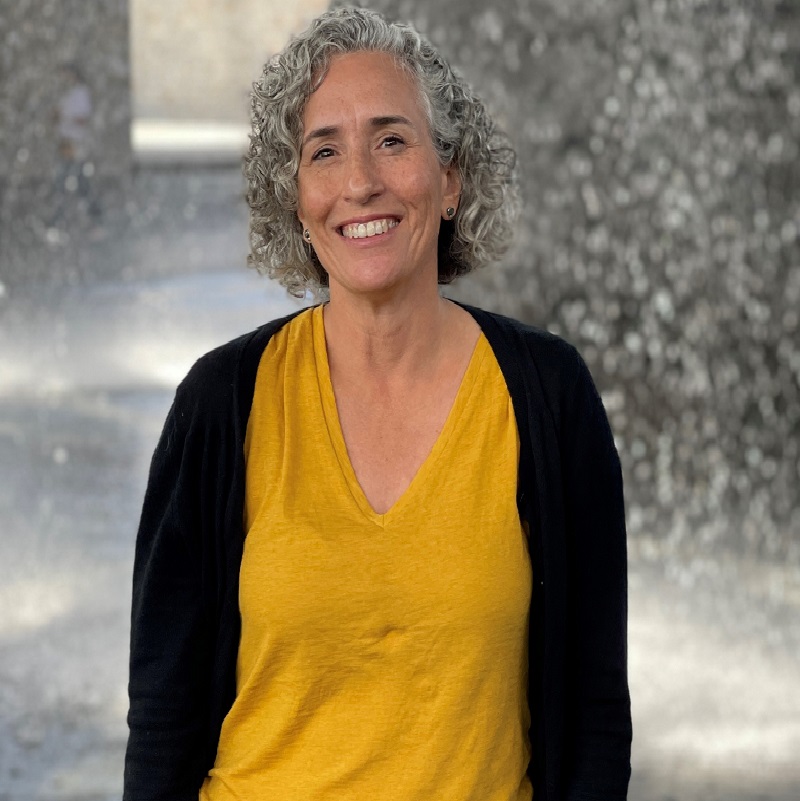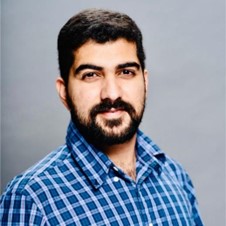By Dhawal Kataria, AICP, RSP, March 13, 2023
Sarah Jones is currently serving as the Acting Director of Marin County Community Development Agency (CDA), which comprises five divisions — Planning, Building & Safety, Environmental Health Services, Sustainability, and Housing & Federal Grants. She had been planning director with the San Francisco Municipal Transportation Agency, creating plans and programs to promote SFMTA’s vision, mission, and Strategic Plan, 2016-2021. Before that, Jones worked for the San Francisco Planning Department for 10 years, the last three as Director of Environmental Planning/Environmental Review Officer. She holds a masters in city planning from UC Berkeley and a BA in urban studies from Stanford University. Jones raised her two children in San Francisco and now lives in San Rafael.

Tell us a little bit about yourself and how you get started in planning.
I grew up in New York City, on the Upper West Side in Manhattan. My father is a doctor and my mother worked in nonprofit fundraising, so I have a strong upbringing in service-oriented, value-driven work. Spending my childhood in New York shaped my views about a place and the benefits of density. Although we had a car, I mainly traveled by bus and could start getting around independently as early as 4th grade.
Planning isn’t one of those fields that most people grow up knowing about or knowing exists. As a senior in High School, I took an architecture class and grooved on it. And so, I thought, maybe I’ll go in the direction of architecture. When I got to college, I started taking classes in urban studies where I was exposed to a range of issues and different aspects of the cities and realized — it’s the sort of thing that is interesting to me, more than any individual building. That’s when I learned about urban planning and thought it will be perfect for me.
What is it like planning in and for Marin County?
Growing up in New York City, I always resonated with big cities and density. Prior to joining Marin County, I had spent 16 years working for the City and County of San Francisco and SFMTA. I always thought I preferred working for large cities. However, after putting a lot of thought into and discussing with a former City Manager and other colleagues, I discovered that it is not the size of the City, instead it is the commitment to problem-solving. I am a public servant at my core and believe in good governance — that government can and should be a force for dealing with bigger social issues and looking out for public interests. This is where a city manager form of government is more effective than a strong mayor city, and what I started gravitating toward.
I ended up in a county with the county administrator. I like working for the county instead of a single city as most of the issues are bigger than any one city. At a county scale, you can pull a lot of things together. Marin County CDA has multiple divisions and a lot of different functions. I work across policy, implementation and regulation, really bringing all of the things together that we do here in this agency.
What planning challenges are you are coming across in Marin county?
Affordable Housing! that’s a universal issue —across the Bay area and California. The particular aspects of it, here in Marin County are that— for a long time Marin County has not welcomed residential growth. Not only due to the environmental and open space preservation but also even in the areas that were being developed were trying to minimize the development. And so, we’re dealing with a serious shortage of housing supply.
Like everybody else, we have been grappling with how to accommodate new state laws and direction, while not giving up on priorities and values that existed for a long time in Marin but also trying to build in and start working towards new values and support equity and workforce of this county. We just had our housing element approved in January 2023 which is not just trying to meet the RHNA but striving to get the housing built. It characterizes our efforts in dealing with issues.
Apart from housing, Marin County is prone to environmental hazards. We completed our safety element along with the housing element and observed that on one level or another every piece of land in Marin County is subject to some form of hazard which also limits our ability to provide housing. Lastly, the fragmentation of our government across the unincorporated county, eleven cities and towns, and many special districts makes it difficult for us to plan.
You mentioned the new state laws and guidance. How difficult was it to incorporate them?
I think on many levels Housing & Community Development (HCD) has worked to make it possible and doable for local agencies but, the legislature does not seem to pay attention to how local planning agencies are going to manage. They are looking to completely revamp the planning process in California.
We don’t necessarily have the staff to update the plans in-house. We have everybody in the region updating the housing element at the same time. So, the consultants are stretched thin about it. Consultants have an important role but you also need to have staff capacity as well. And then on top of that, elected officials are stepping in and undertaking this huge lift.
HCD has tried to provide clear guidance to the cities about what they need to do. And in many cities, there’s a lot of pushback about that, placing planners in a hard spot. The prescriptiveness is challenging too, as it can be very hard to identify perfect in all ways sites for housing development.
Do you think this is a step in the right direction? And will affordable housing be possible in the future?
I think we need these kinds of reforms to collectively solve the larger problem and deal with the issue effectively. Adding some affordable housing is not going to solve this problem. A lot more strategies and funding are required.
What are you determined to accomplish in Marin County in your new role?
I would like to have the work of the CDA be more connected both internally and externally. Within the CDA, we have five divisions, and historically a lot of times they have operated individually. They certainly have individual roles and responsibilities but I see a real value in all of our divisions being together in one agency and I would like to build on the relationships and cross-connections between the work of our divisions. Furthermore, I would like the CDA to have better connections with other County departments for better collaborative projects.
You wrote an article about Car-Free JFK Drive. What was the motivation behind the article? What else would you like to share about that effort?
The Frisc asked me to write it. I had just left my job at SFMTA and could be more vocal about my views than I could if I were still there. As I mentioned in the article, I worked on the JFK Drive while I was at SFMTA as a Covid-19 recovery effort. It was like — we have been through this massive upheaval and change. What is it like on the other side and what do we want it to look like on the other side? It was a moment when the change had been brought upon us. We had responded to that change. Now it was time to take stock of that and make the decision about whether we wanted to keep pushing for change or we wanted to make that change permanent. This goes back to my feelings about governance and problem-solving, but I wanted to see the City live up to its values.
How do you deal with a difficult situation where you face a lot of opposition from the community?
I try to lean into the pushback. I try to open the space to understand what is at the core of the opposition and to the degree, it can be addressed. Often addressing the opposition is also consistent with the values, JFK drive is a good example.
When you’re advocating an idea, some people will get upset and you have to step in there and defend it.
Spend hours and hours bringing people along and working with elected officials. You have to feel good about the recommendations you are making.
How difficult was it for you to re-enter the planning profession after a career break?
I took a career break because my second child had significant medical problems that required me to be with him full-time. I was surprised to get hired after my break. I think it was mainly because I had some solid CEQA experience under my belt.
When I hire planners, I look for attitude and aptitude over experience. Experience is important too but that’s not what necessarily gets you through the interview. So, what you have gained before the break doesn’t go away.
I probably ended up about a year and a half behind where I would have been otherwise. However, It hasn’t made a difference for me in the long run. I can only think of a couple of times when I was asked about the career break in a job interview.
I see that the planning profession has grown and expanded to provide more opportunities in community development. I know a lot of planners for whom planning is a second career. I have learned so much as a parent that I apply in my work. It’s great to have people who are parents as planners.

Interviewer Dhawal Kataria, AICP, RSP, is a transportation planner at Kittelson & Associates and a guest writer for Northern News. All interviews are edited.

